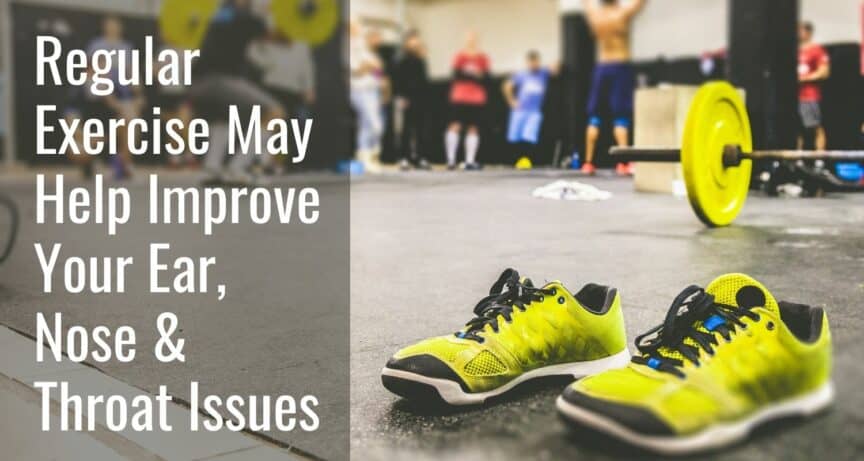The countless benefits of exercise are widely known: increased energy enhances oxygen and blood circulation, and reduces health risks. But did you know that exercise can also help improve ear, nose, and throat (ENT) issues? Common ENT issues include tonsillitis, ear infections, sinus infections, colds, and flu. These illnesses are caused by a bacterial or viral infection that impacts the upper respiratory system which is the part of the body that is responsible for an essential function: breathing. Research suggests that regular exercise can strengthen the immune system which boosts its ability to prevent infections that contribute to ear, nose, and throat issues.
Understanding Common ENT Issues
The respiratory system includes the throat, lungs, sinuses, and airways which are integral to how we breathe. Infection of these areas causes health conditions that produce some of the most common ENT issues. This includes:
- Sinus infections: an estimated 35 million people experience a sinus infection every year. This is an inflammation of the sinus cavities (in the face) which causes them to become blocked with fluid. Sinus infections are caused by viruses or bacteria. An acute form of a sinus infection is the common cold.
- Ear Infections: An ear infection is caused by bacteria or virus that infects the air-filled space behind the eardrum. This causes swelling, pain, difficulty hearing among other symptoms.
- Tonsillitis: an infection of the tonsils which are the tissue in the back of the throat. The tonsils help trap germs and viruses, preventing sickness. Tonsillitis produces inflammation, sore throat, and difficulty swallowing.
- Allergies: more than 50 million people experience allergies every year. This affects an estimated 30% of adults and 40% of children. Allergies occur when the body’s immune system overreacts to a specific substance by releasing chemicals like histamine into the bloodstream. This produces symptoms we typically associate with allergies.
These health issues involve the body’s respiratory and immune systems. Exercise can strengthen these areas, improving ENT issues as well as reducing health risks.
How Exercise Improves ENT Issues
Exercise offers many health benefits that strengthen the body and all of its systems including the respiratory system. Research shows that exercise is an effective way to help prevent respiratory sickness which is what often contributes to ENT-related health conditions.
This includes a study published in the Annals of Family Medicine that investigated exercise as a preventative measure for respiratory infection. The study included over 150 adults, ages 50 and older, some who regularly engaged in moderate exercise and others who did not. Key findings included:
- 54% of adults who did not exercise experienced viral infections compared to 42% of adults who did exercise regularly.
- Adults who exercise regularly were up to 31% less likely to experience respiratory-related health issues
This also translated into less reduced health-related appointments and missed days of work for the adults who exercised regularly. Researchers suggest that by strengthening the body’s immune system, it is more empowered to better fight off viruses and bacteria.
Upper respiratory infections occur when a virus or bacteria enters it – this can happen in several ways: touching a surface with bacteria and then touching your mouth or nose or interacting with another person who’s sick. This then produces a range of symptoms – coughing, congestion, fever, sore throat, etc. – that impacts breathing. Exercise increases the circulation of immune cells which can help the body respond to viruses and bacteria more quickly. The effective activation of this response system can prevent infection, reducing the risk of ENT-related issues.
Tips to Start Exercising Today
The pressure of committing to intense workouts is often a barrier to exercise. But you don’t need to overly strain yourself to experience the health benefits exercise offers. If you engage in light to moderate exercise regularly, you can boost your body’s immune system. This can be as simple and accessible as:
- walking for 30 minutes every day
- water aerobics or simply going swimming regularly
- gardening and yard work: raking, mowing the lawn
- riding a bike (stationary or outdoors)
These forms of exercise can easily be integrated into your daily life. This supports you in engaging in physical activity regularly, improving your health and wellness.

